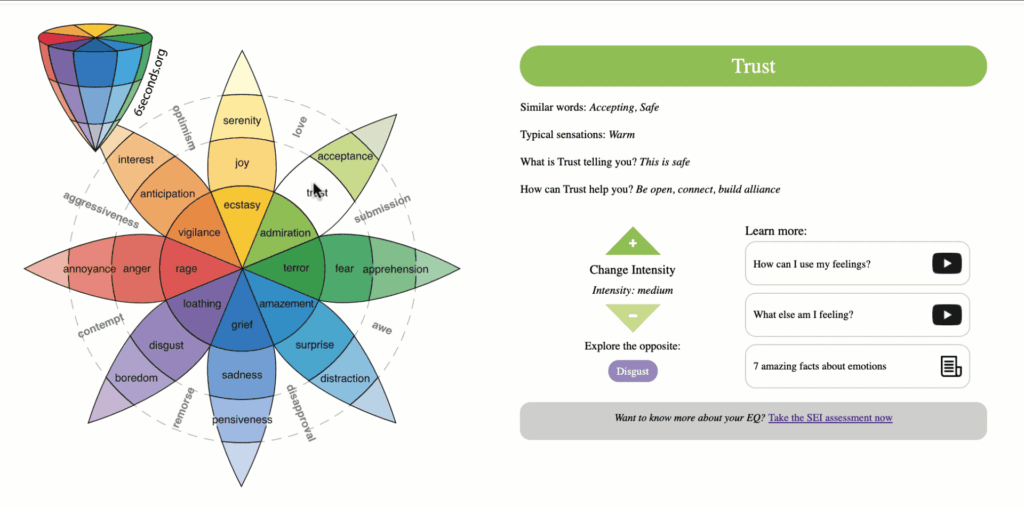Did you know that we “catch” other people’s emotions even when we’re not consciously aware of it? It is the neurological underpinning of empathy, and it provides us with a wealth of information about our interpersonal connections. They are substances that help our bodies and minds stay in balance, enabling us to handle the challenges of decision-making, social interaction, and life navigation. Emotions serve as a motivator for activity, a focus for our attention, and a means of helping us pay attention. Even though they might be perplexing at times, emotions are a part of who we are, so we might as well learn how to use them effectively. The following seven crucial emotional facts are an excellent place to start.
Emotions are electrochemical signals that flow through us in an unending cycle.
Our impressions of the world cause them to be released in our brains. We experience them often, which makes me question why I studied how to divide fractions by other fractions and everything there is to know about Henry VIII executing his wives, but virtually nothing about something that is so vital to my daily health and wellbeing. However, emotions are constantly being discharged from our brains into our bodies. The article, The Physics of Emotion: Dr. Candace Pert on Feeling Go(o)d), adds information on the notion of emotions as feedback loops transporting information to support our function. They are also formed in our bodies and travel to our brains.
2. There are 8 basic emotions–and countless variations and nuances of those.
The 8 basic emotions are Joy, Sadness, Fear, Disgust, Surprise, Anticipation, Anger and Trust. There are different models of which are the basic ones, but this comes from a scientist named Robert Plutchik, who also created a Wheel of Emotions to illustrate these 8 emotions in a compelling way. It shows visually the dynamism of emotions, like what happens to an emotion when it’s left unchecked and what you get when you combine two emotions, like Anticipation and Joy. It’s pretty interesting stuff, especially when you know how to interpret the wheel. For a full break down, check out Plutchik’s Wheel of Emotions. If you want to enhance your emotional literacy, which is an essential component of practicing EQ, this is a great place to start.

3. Emotions are neutral.
In other words, not all feelings are either good or harmful. This is because, for instance, happiness seems to triumph over melancholy in a resounding manner. Who really wants to be depressed? However, there are two issues with this line of thinking. The first issue is that happiness and melancholy share more in common than we may imagine. I’m happy when I get something important to me. Sadness results from losing something important to me. They are therefore basically just two sides of the same need, and we are unable to have either one without the other. The fact that every feeling is only a signal that conveys a message is the second issue. Even negative emotions such as fear, rage, or grief have a purpose. So, what are the functions of emotions?
4. Emotions function to guide us to survive and thrive.
Our attention is drawn to and motivated by our emotions to take a particular course of action. Every emotion serves a function. For instance, consider anger. Anger is a symptom that our way is being obstructed. It draws our attention to the danger and inspires a reaction of resistance or pushing past the challenge. Of sure, it has a destructive side, but it also gives us the drive to solve immediate issues. How about another feeling, like joy? Our concentration is drawn to an opportunity by joy, which spurs us to accomplish more of what we are already doing. When meaning and connection occur, we experience delight, and the emotion serves as a signal to us that these are desirable qualities that we should look for.
The Emotoscope Feeling Chart, created by Six Seconds, aids in understanding the function and significance of various emotions. It has dozens of emotions, all versions of Sadness, Joy, Fear, and Anger, as well as the message that each one conveys. For instance, the other day I was experiencing life-overwhelm. My brain was spinning from being so busy. I noticed overwhelmed under sad when I took a closer look at the chart. What did that sensation serve to achieve? to alert you to the necessity for prioritization. The Emotoscope Feeling Chart is available for free download, and you can maintain a copy at your house or place of business.
Emotions are contagious.
Even if we’re not aware of our emotions, feelings can spread between people like a virus. We are capable of “catch[ing]” both happy and bad emotions, whether we’re around other people or just one. This has a straightforward evolutionary justification: Humans have only coexisted and prospered in groups. We are sociable beings. We consequently have a propensity to detect one another’s emotional moods. Consider it in this manner. If you react swiftly and your own fear response immediately kicks in when you notice terror on someone else’s face, you have a better chance of surviving. It can mean the difference between getting away or getting devoured by the tiger your friend just saw.
Moreover, it’s not just dread. Voice inflection, facial expressions, posture, and particular behavioral patterns are just a few of the ways that we constantly transmit and receive emotional messages. We all engage in it, even if we aren’t aware of it, and it is a very significant type of communication. One of my all-time favorite emotional facts is that we unconsciously imitate the slowness of old folks because of the way our brains are wired.
Emotions are different than feelings – and moods.
Of course, they are all connected. What makes them distinct? Essentially, time. And how much our cognitive thoughts are affected. What’s the Difference Between Emotions, Feelings, and Moods provides an in-depth look at the distinction.
Did you know that even when we’re not consciously aware of it, we may “catch” emotions from others? It’s the brain underpinning of empathy and it reveals a lot about our interpersonal connections.
Emotions are absorbed in the body in about six seconds.
A burst of emotion chemicals lasts for about six seconds from the time it is created in the hypothalamus until it is entirely digested and absorbed. That is how our organization’s name came to be. If we experience a feeling for more than six seconds, we are consciously choosing to recreate and feed that emotion. If the tiger is still after you, those fear-related chemicals may be helping to preserve your life. Sometimes it isn’t. However, emotional intelligence is all about identifying the emotion we are experiencing, assessing its significance in light of our situation, and deciding whether to replicate it. Check out Get Started with Emotional Intelligence to find out more about emotional intelligence and how to use it.


